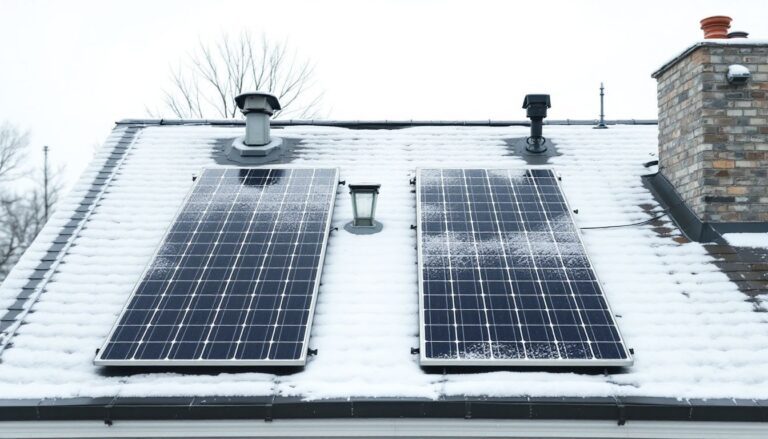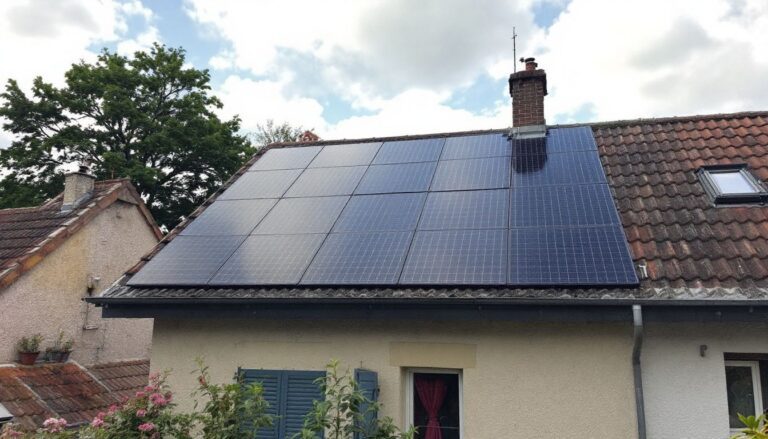Quelle est la différence d’apparence entre les panneaux monocristallins et polycristallins ?
Choosing the right solar panels can be confusing for many homeowners. Monocrystalline panels feature a sleek black color, while polycrystalline panels display a bluish, speckled appearance.
This article breaks down their colors, textures, and cell structures to help you select the best solar panels for your installation. Discover which panel type fits your needs best.
Key Takeaways
- Color and Look
- Monocrystalline panels are all black and smooth.
- Polycrystalline panels are blue with speckles.
- Efficiency
- Monocrystalline panels are 16-24% efficient.
- Polycrystalline panels are 14-18% efficient.
- Cost
- Monocrystalline panels cost around €8,000 for a 3kWc system.
- Polycrystalline panels are cheaper at €6,500.
- Durability
- Monocrystalline panels last up to 35 years.
- Polycrystalline panels have a good lifespan but are slightly less durable.
- Design Fit
- Monocrystalline panels blend well with many roof styles.
- Polycrystalline panels have a varied texture that may contrast with some buildings.
Defining Monocrystalline and Polycrystalline Solar Panels

Monocrystalline solar panels are made from a single silicon crystal. Each cellule photovoltaïque is pure, enhancing efficacité énergétique. These panneaux solaires offer a puissance crête of 16-24% and can last up to 35 years, ensuring a long durée de vie.
They are ideal for installations photovoltaïques where space is limited.
Polycrystalline solar panels consist of multiple silicon crystals. Their efficacité énergétique ranges from 14-18%, slightly lower than monocrystalline panels. These panneaux solaires polycristallins are often more affordable and suitable for larger installations photovoltaïques.
They provide reliable performance and a decent durée de vie.
Monocrystalline panels are known for their efficiency and durability.
Appearance Differences Between Monocrystalline and Polycrystalline Panels
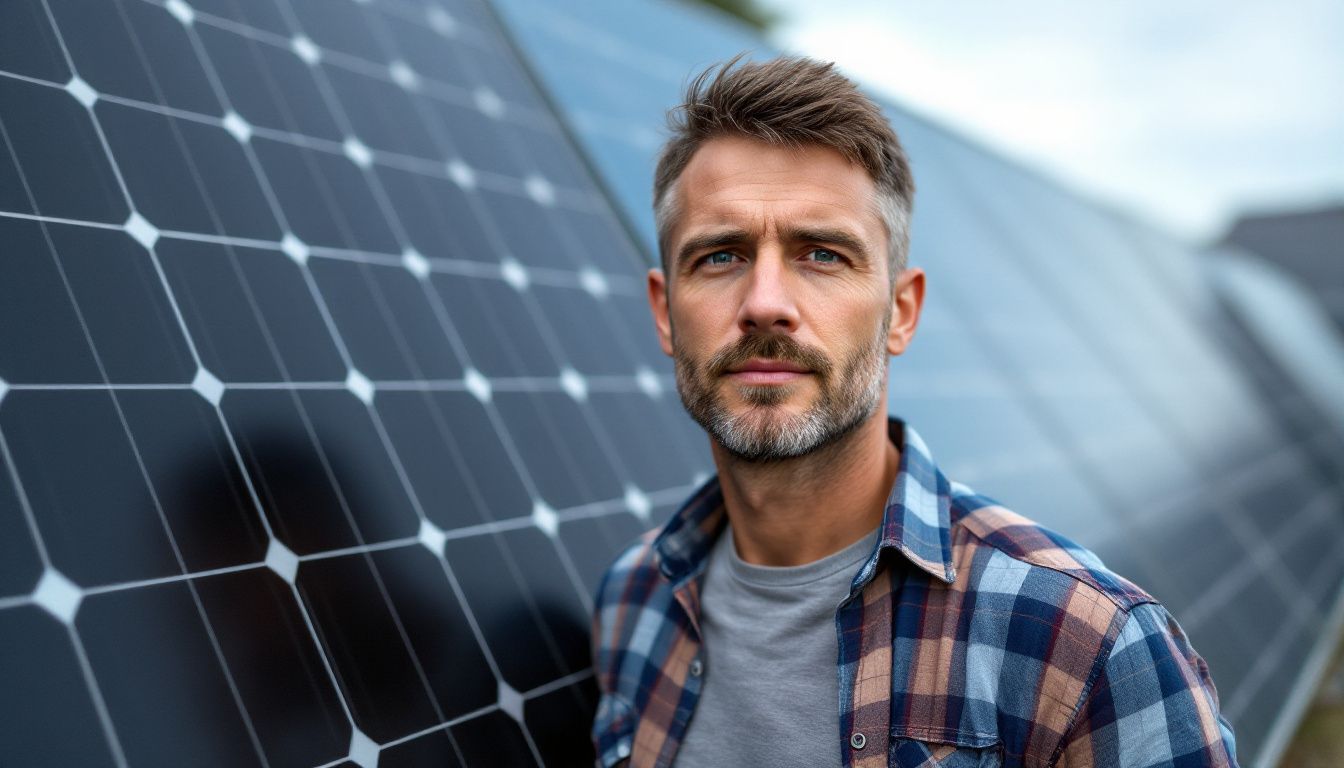
Monocrystalline panels feature a sleek, all-black surface, giving them a uniform and elegant appearance. In contrast, polycrystalline panels have a bluish tint with visible crystal patterns, making their texture more varied.
Color and Texture
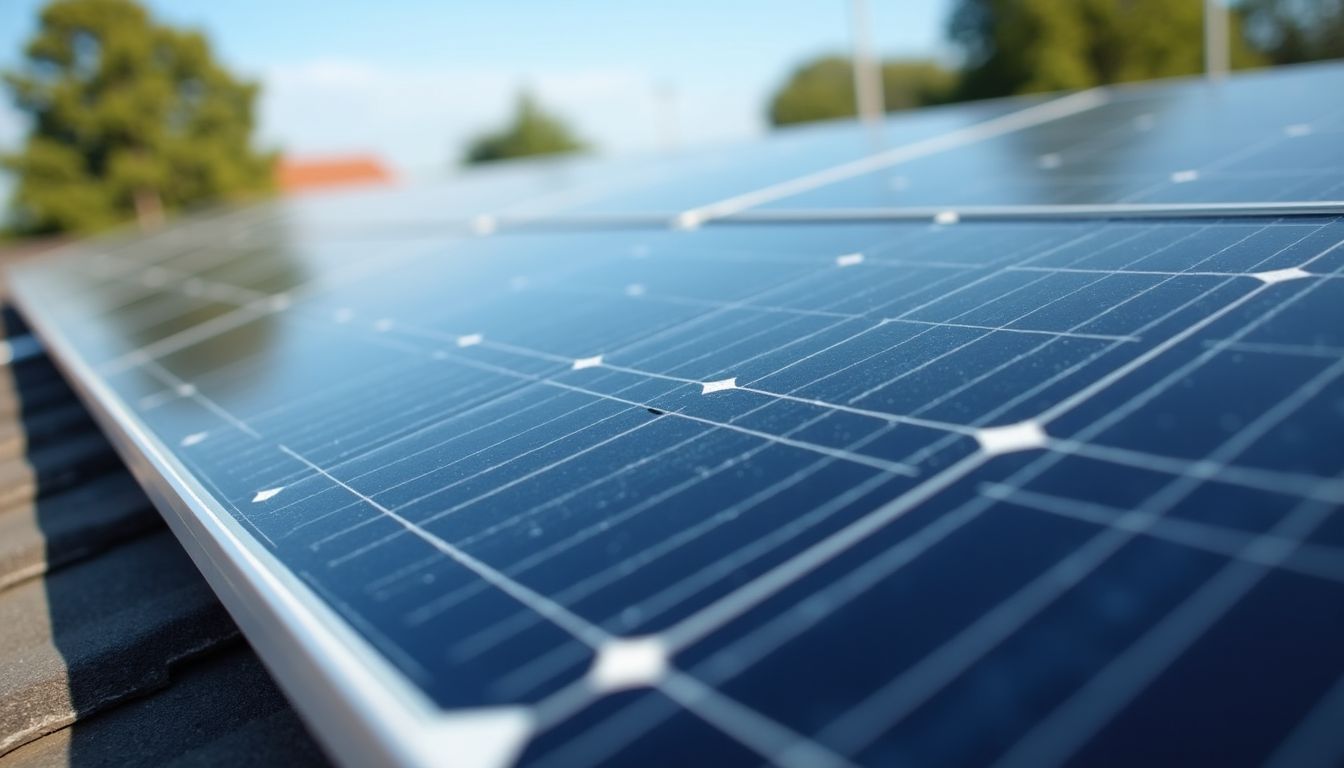
Monocrystalline solar panels display a uniform black color. They are made from silicium monocristallin, which gives them a smooth and sleek texture. These panels have a consistent surface, ideal for homes and buildings seeking a clean look.
Polycrystalline panels, on the other hand, show a bluish tint. Constructed with silicium polycristallin, their surface appears uneven with visible crystal patterns. This heterogeneous texture provides a distinct appearance compared to monocrystalline panels.
Choosing between them can depend on the desired aesthetic for your installation solaire.
Cell Structure Visibility

The cell structures further distinguish monocrystalline and polycrystalline panels. Monocrystalline panels use photovoltaic cells made from a single silicon crystal. This creates a uniform, smooth surface with clear cell lines.
Polycrystalline panels consist of multiple silicon crystals. Their cells show visible boundaries, giving a speckled texture.
A single crystal structure ensures maximum efficiency and a sleek look in monocrystalline panels.
Panel Uniformity
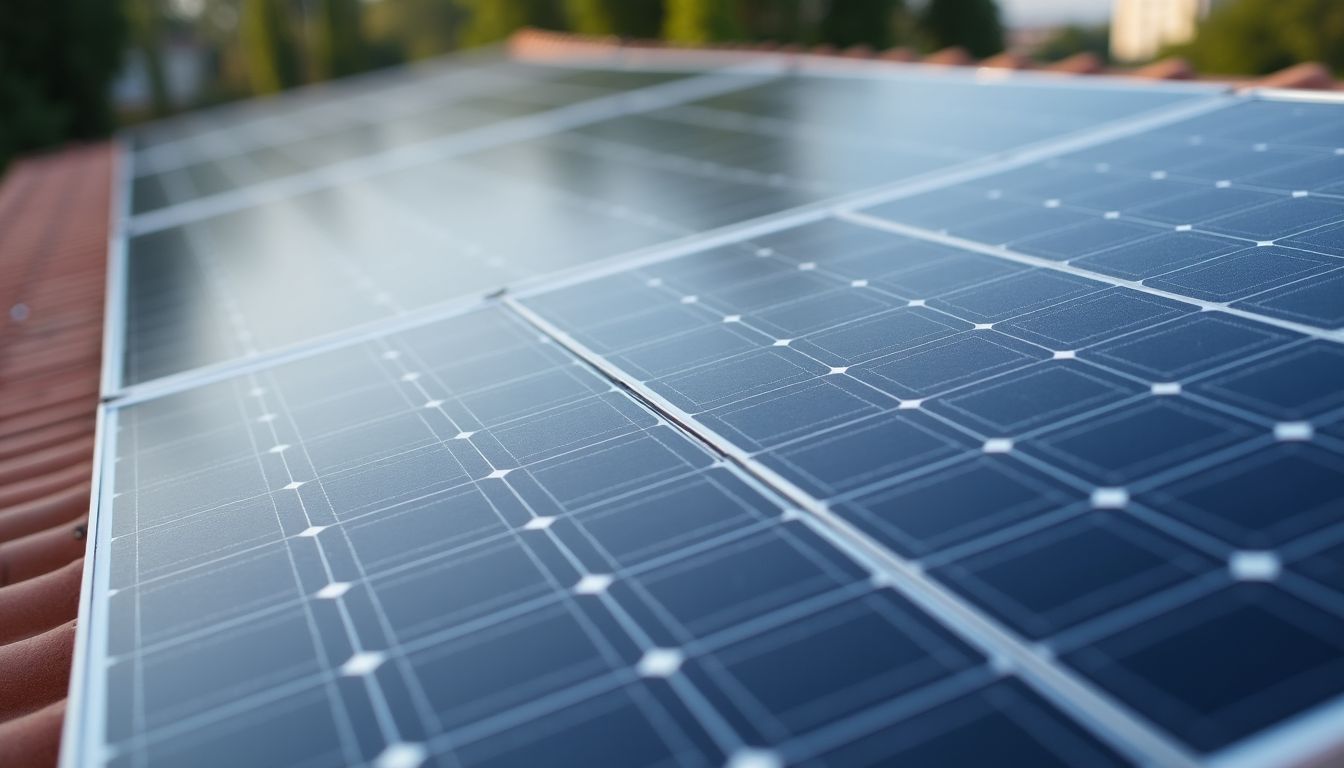
Monocrystalline panels display a uniform black color. Their smooth surface provides a sleek and consistent look. Polycrystalline panels have a bluish tint and a varied surface. The visible silicon cells create a speckled appearance.
This uniformity difference affects how the panels blend with building designs and their overall aesthetic.
Impact of Appearance on Performance

The look of solar panels affects how they capture sunlight and handle heat, which can change their efficiency—discover more here.
Light Absorption
Monocrystalline panels absorb light efficiently in areas with limited sunlight. Their single silicon cells capture more photons, enhancing the effet photovoltaïque. Polycrystalline panels excel in bright, hot regions by handling high light intensity better.
Multiple silicon cells in these panels improve power output under strong sunlight. Efficient light absorption increases courant continu generation, essential for installation photovoltaïque and reducing the coût des panneaux solaires.
Heat Tolerance
Heat affects how well solar panels work. Panneaux solaires monocristallins handle high temperatures better. Their cellules de silicium stay efficient even when it’s hot. Polycrystalline panels may lose some power in the heat.
This means monocrystalline panels keep generating more courant alternatif during warm days.
Long-term performance is also important. Monocrystalline panneaux solaires last about 35 years. Effy Sérénité’s European-made kits photovoltaïques keep 93% of their power after 10 years.
Better heat tolerance reduces the impact environnemental. Choosing panels that resist heat means fewer replacements and less waste over time.
Considerations When Choosing Based on Appearance

When choosing solar panels, consider how their appearance matches your home and any local design guidelines—continue reading to learn more.
Aesthetic Integration in Building Design
Monocrystalline panneaux solaires blend smoothly with building designs. Their uniform black color matches many roof styles. Effy Sérénité offers kit photovoltaïque installations starting at €6,490.
This helps buildings maintain a sleek look. Architects prefer these cellules photovoltaïques for aesthetic integration.
Polycrystalline panels have a different color and texture. They can contrast with the building’s exterior. Choosing monocrystalline panneaux solaires ensures the solar system fits well.
It meets neighborhood and regulatory aesthetics requirements.
Neighborhood or Regulatory Aesthetics Requirements
Local rules set standards for panneau solaire on homes and buildings. These standards help solar panels match the area’s look. Effy Sérénité partners with BNP to offer aides financières.
This makes it easier to choose panels that fit both the design rules and your energy needs. Homeowners can select styles that comply with neighborhood or regulatory aesthetics while benefiting from solar energy.
Cost Implications Related to Appearance

Choosing panels with a sleek appearance might cost more initially, but knowing these price factors can guide your choice—read on to discover more.
Initial Manufacturing Costs
Monocrystalline panels cost about €8,000 for a 3kWc system. Polycrystalline panels are cheaper, around €6,500. The higher price of monocrystalline panels comes from their more precise manufacturing process.
From September to October 2024, customers rated both types highly, showing strong satisfaction with their investments.
Market Availability and Demand
Effy Sérénité provides European-made monocrystalline solar panels with a 25-year guarantee. These panels are widely available and trusted for their quality. Customers choose Effy because their electricity costs 9 cents per kilowatt-hour.
This rate is half the average public price of 18 cents. Lower prices drive more people to buy Effy’s panels.
The demand for monocrystalline panels grows as more seek reliable energy solutions. Effy’s panels meet market needs with their durability and efficiency. Availability is strong, ensuring customers can easily access high-performance solar technology.
This trend reflects the increasing preference for cost-effective and sustainable energy options.
Conclusion
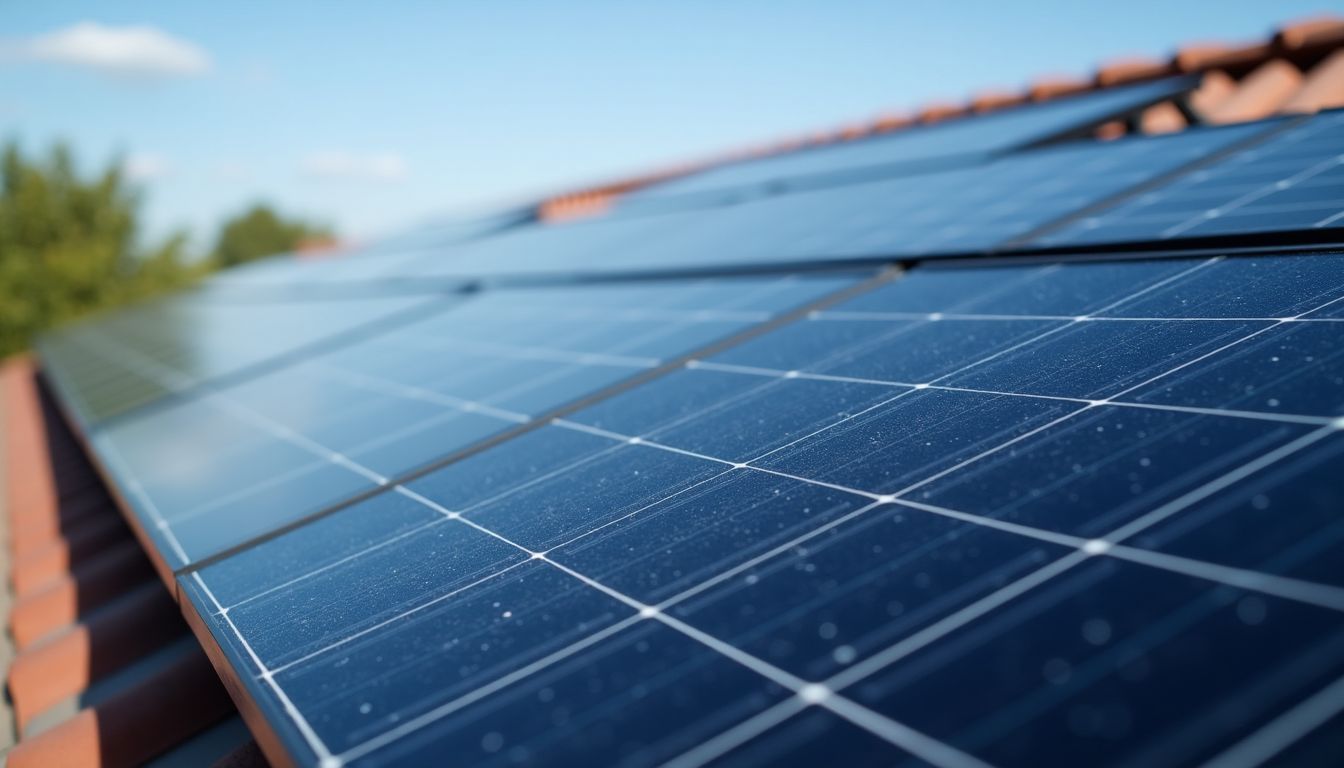 Monocrystalline panels have a sleek black look. Polycrystalline panels show a blue, speckled surface. These appearance differences can impact how well they fit your roof. Choose the type that matches your style and needs.
Monocrystalline panels have a sleek black look. Polycrystalline panels show a blue, speckled surface. These appearance differences can impact how well they fit your roof. Choose the type that matches your style and needs.
Both panels provide reliable energy for many years.






